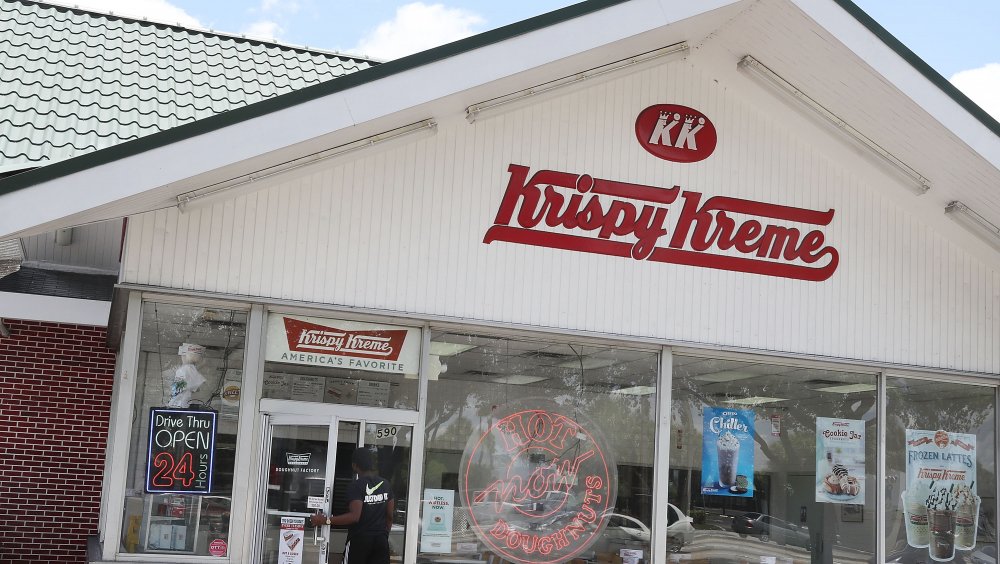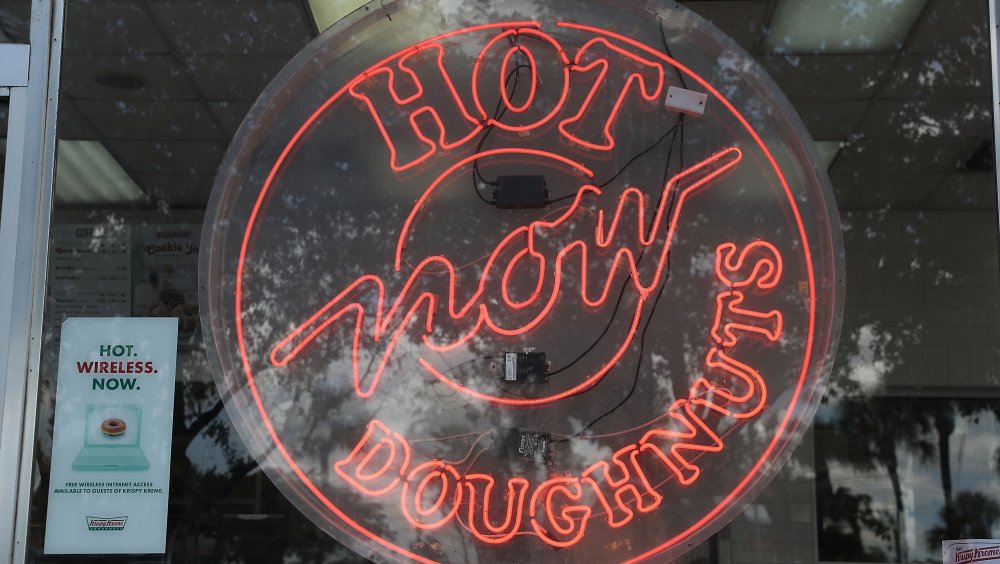The Real Reason Krispy Kreme Almost Went Out Of Business
Anyone who's not an out-and-out carb-o-phobe probably has a secret – or not so secret – soft spot for Krispy Kreme. While America (particularly New England) may run on Dunkin' and Canadians love them some Tim Hortons', Krispy Kreme is a one-time regional southern icon that's now known and loved throughout the whole world. But the road to success has not been without its ups and downs.
According to the Arizona Daily Sun, Krispy Kreme got its start in 1937 in Winston-Salem, North Carolina, and was so successful it soon spread throughout the south. Once its original founder died in the early '70s, though, the chain was bought out by the giant conglomerate Beatrice Foods who promptly went about sacrificing quality for quantity. Krispy Kreme may well have gone out of business at this time, but in the early '80s about 20 of its disgruntled franchisees got together and pooled their funds to purchase the company. They soon found their way up north, and by the '90s Krispy Kremes were a cultural phenomenon, being delivered to the Clinton White House, celebrated on Sex and the City. If you made it through the decade without ever tasting a delicious Krispy Kreme glazed donut hot and fresh from the fryer, you were totally out of touch.
How it all went wrong
In 2001 Krispy Kreme went public on the New York Stock Exchange, and within two years shares would be traded for $50 apiece. By this time, Krispy Kreme had stores in England, Australia, and Korea, and they were cranking out nearly 3 billion donuts each year. Then, all of sudden, what once was sizzling seemed to start fizzling. Profits were down, the SEC launched an investigation into some dodgy accounting practices, and the SEO found himself out on his ear.
What went wrong? In part, the early-2000s low-carb craze that demonized all things starchy and sugary may have been to blame. There was also the fact that they just grew too fast, to the point where people were beginning to associate the chain less with its fresh, hot donuts and more with the not-so-fresh packaged products that were becoming ubiquitous in grocery stores and gas stations. As Carl Sibilski with Chicago financial consulting form Morningstar saw the situation (via the Arizona Daily Sun), "They grew faster than they were being efficient." He did, however, foresee a brighter future for the company under new management, and this proved to be the case – otherwise, this would be one of those "remember this brand you can't get anymore" elegies.
How Krispy Kreme turned itself around
In 2006 Krispy Kreme named a new CEO, Daryl Brewster, and his first priority was to get the struggling chain to pick itself up, dust itself off, and start all over again. Brewster spoke with the Wall Street Journal over a decade later about how he managed to accomplish this seemingly impossible task. While he said they made some fundamental changes such as implementing cost-cutting measures and improving communications, one of the keys to the chain's financial turnaround lay in international expansion. In light of the SEC investigation, the chain couldn't add any more domestic franchises until they cleaned up their finances, but they were permitted to expand abroad. They also adopted stricter standards when it came to taking on new franchisees, requiring them to be experienced in the restaurant industry so not in need of much training. Their new international franchises allowed the chain to raise the capital it needed to get things straightened out to the point where they could start franchising in the U.S. again.
However they did it, Krispy Kreme managed to save itself from the brink of disaster for a second time, and 15+ years later has risen to new heights. From offering free donuts to high school graduates and expanding National Donut Day to a week-long celebration to introducing crazy-good new flavors like coconut cake, banana pudding, and Mississippi mud pie, it looks like Krispy Kreme's planning to stick around for a good long while.


